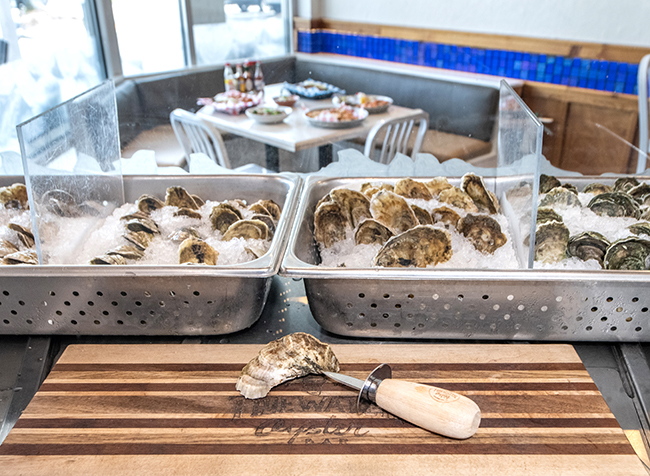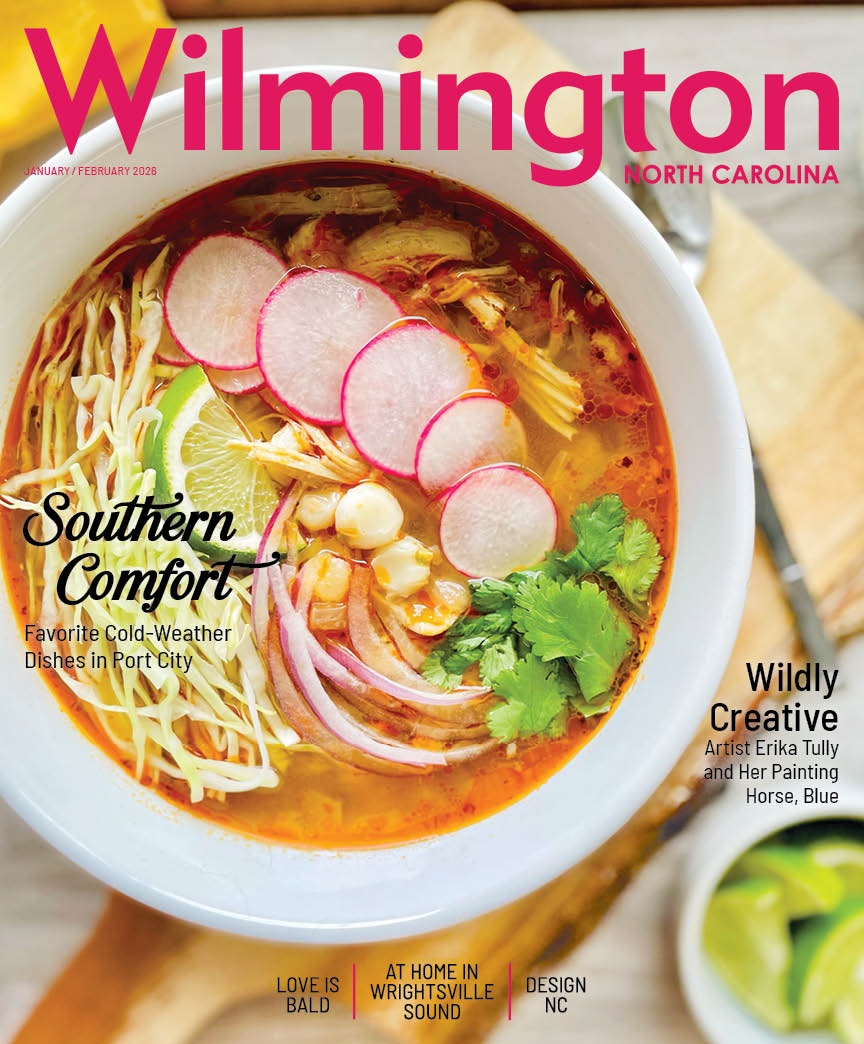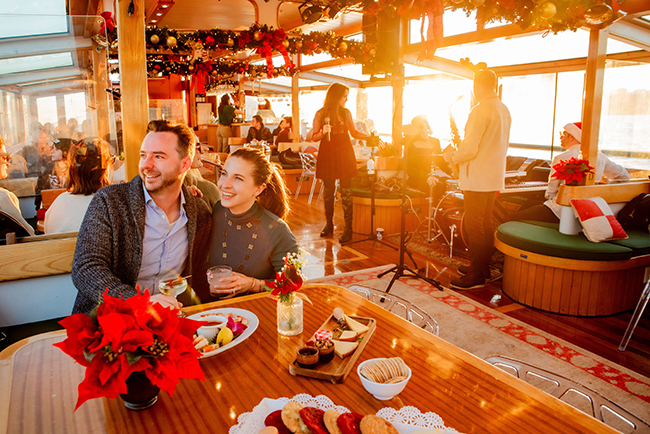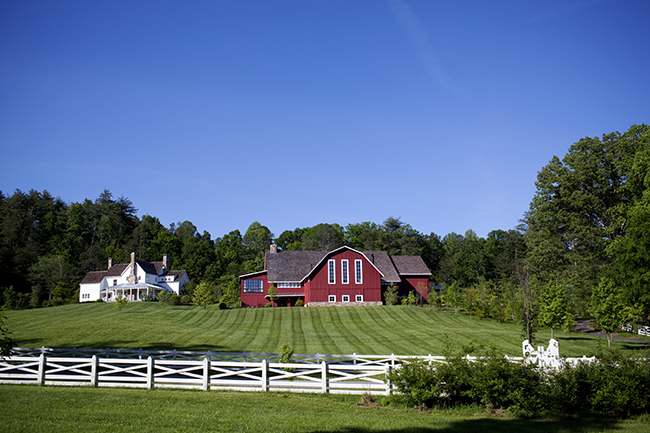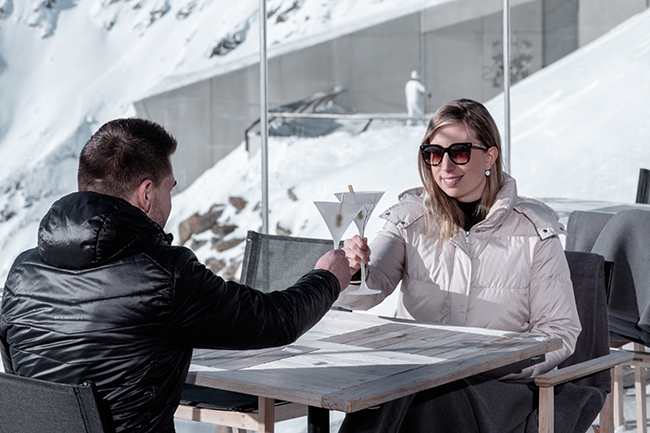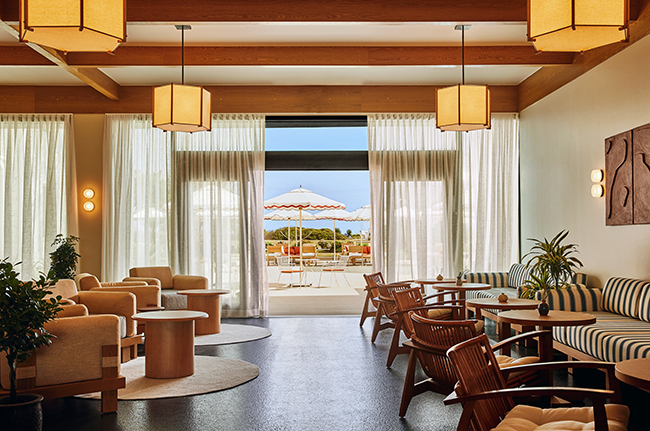Go Big or Go Home
04 Nov 2024
Hiking New Hampshire’s White Mountains
By Katie McElveen
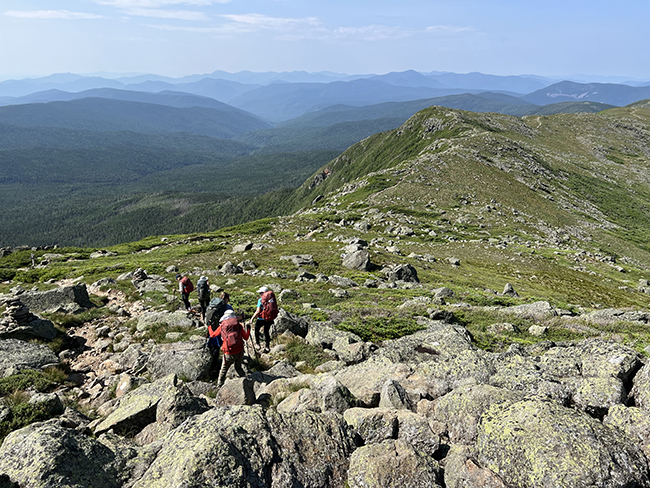
I’ve had many sounds rouse me from a sound sleep—crying babies, whining puppies, thunderstorms, lawnmowers—but, until this particular morning, never an accordion. But, then again, I’d never spent the night in one of the Appalachian Mountain Club’s historic trailside huts, which offer food, lodging, potable water and memorable wakeup calls to hikers on the trails in New Hampshire’s White Mountains.
I was here because I’d always wanted to take a multi-day hiking trip that would require sleeping somewhere, if possible, between a hotel and a tent. Unfortunately, I had no idea how to plan such a trip.
It turns out I didn’t have to. Early in the summer, an opportunity arose to take a three-day, two-night trek into New Hampshire’s White Mountains where, over three full days of hiking, I would scale four peaks of the state’s Presidential Range, including the 6,288-foot tall Mount Washington. The hike would be steep and rocky—hikers average about one mile an hour—and I’d be carrying about 20 pounds of water and gear. Each night, I’d bed down in one of the AMC’s huts.
The trip was organized by Wildland Trekking, which was acquired by Intrepid Travel in 2022 and takes small groups of outdoorsy types on adventures all over the world. In addition to meals and a guide, Wildland provides necessary gear, which, in this case, includes backpacks, sleeping bags and hiking poles.
I was surprised to learn that the White Mountains are actually an 87-mile-long segment of the Appalachian Mountains; within the White Mountain National Forest lie an astounding 48 peaks that reach beyond 4,000 feet. The tallest, Mount Washington, is 6,288 feet tall and the highest mountain in the eastern U.S.
My trip began on a warm July day at AMC’s Highland Center, which serves as both a hotel and jumping-off point for hikers. Just before dinner, I met our guide, an amiable outdoorsman named Quincy, and the small group that would be joining me. After introductions, Quincy distributed our gear and explained how to fill our packs so they’d be balanced and easier to carry.
The next morning, we set off on the Ammonoosuc Ravine Trail for the Lakes of the Clouds hut, where we’d drop our gear before continuing to the top of Mount Washington. Rain made progress slow, but, worse, it washed out a bridge we were supposed to cross, forcing us to double back to the Jewell Trail. Quincy explained that, given how far behind we’d gotten, we had to decide whether to skip the summit and circle around to the hut or make the climb with our full packs. At that moment, just a couple of hours into our first hike, I was grateful that I hadn’t tried to do this alone.
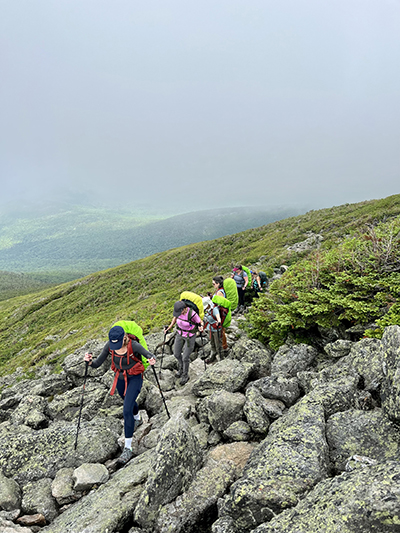
As we ascended, the landscape changed from dense forests to massive balds, plunging valleys and mirror-like lakes. We ate lunch on a slab of schist as clouds rolled by at eye level, often enveloping us in their cool mist.
The higher we climbed the steeper the trail became; the final half mile took nearly an hour. When we reached the top, surrounded by people who had summited in a car or aboard the cog-wheel train, we high-fived, passed around a bottle of Advil and tucked into the single Snickers bar that someone found at the bottom of her bag.
The weather in the White Mountains is so fiercely unpredictable that, beginning in the late 1800s, Boston’s Appalachian Mountain Club began constructing permanent shelters where hikers, stranded by a surprise snowstorm or dense fog, could escape the harsh conditions. Today, anyone can reserve a bed at one of the huts; they’re particularly popular with thru-hikers on the Appalachian Trail, which runs through the region.
The Lakes of the Clouds Hut was constructed in 1915; like all of the huts, it can only be reached via a hiking trail. During the season, 90 or so hikers share a family-style dinner before falling, exhausted, into their bunks. Everything in the hut—cooking supplies, food, paper products—is delivered on the backs of the staff—called the “croo,” who also cook, clean and carry trash down the mountain. Most croo members are around college-age; all seem to be having the time of their lives. They also love the White Mountain: At breakfast, after a weather briefing, the team put on a hilarious skit that put a point on the damage hikers can cause to the delicate ecosystem by taking shortcuts off the trail, picking wildflowers and leaving trash.
Our goal for the second day of hiking was the seven-mile trek along the Crawford Path, which is part of the Appalachian Trail, to Mizpah Springs Hut. As we made our way toward the hut, we’d climb Mounts Monroe, Franklin, Eisenhower and Pierce, four of the peaks in the Presidential Range, centered by Mount Washington. Once again, the views were stunning and the work was hard as we forged creeks, balanced on narrow ribbons of rock and tromped through gullies. We thought we’d made it, with time to spare, when we arrived at the final challenge—a boulder-strewn pathway that led almost straight down—and discovered that the ladder built to assist hikers to the bottom had rotted away.
Once again, Quincy gave us an option: loop back and come in from a different angle or help each other down the treacherous slope. After two days of relying on each other to push through the increasingly challenging terrain, our small group knew we could do it. One by one, grasping, hoisting, holding and pulling, we got each other down the short but scary rockfall and continued on our way.
I had an early flight the next day, so I was up with the sun—this time awakened by a quartet accompanied by a guitar—with one other hiker, on the trail as soon as it was safe for the three-mile sprint back to Highland Center, where I’d left my rental car.
Driving back, I reflected on the trip. I had reached my goal, but, with my fellow hikers, built a sweet camaraderie that was an unexpected bonus to what I’d expected to be a simple physical achievement. I’m not sure I’m up for another, but I wouldn’t trade the experience for anything.


